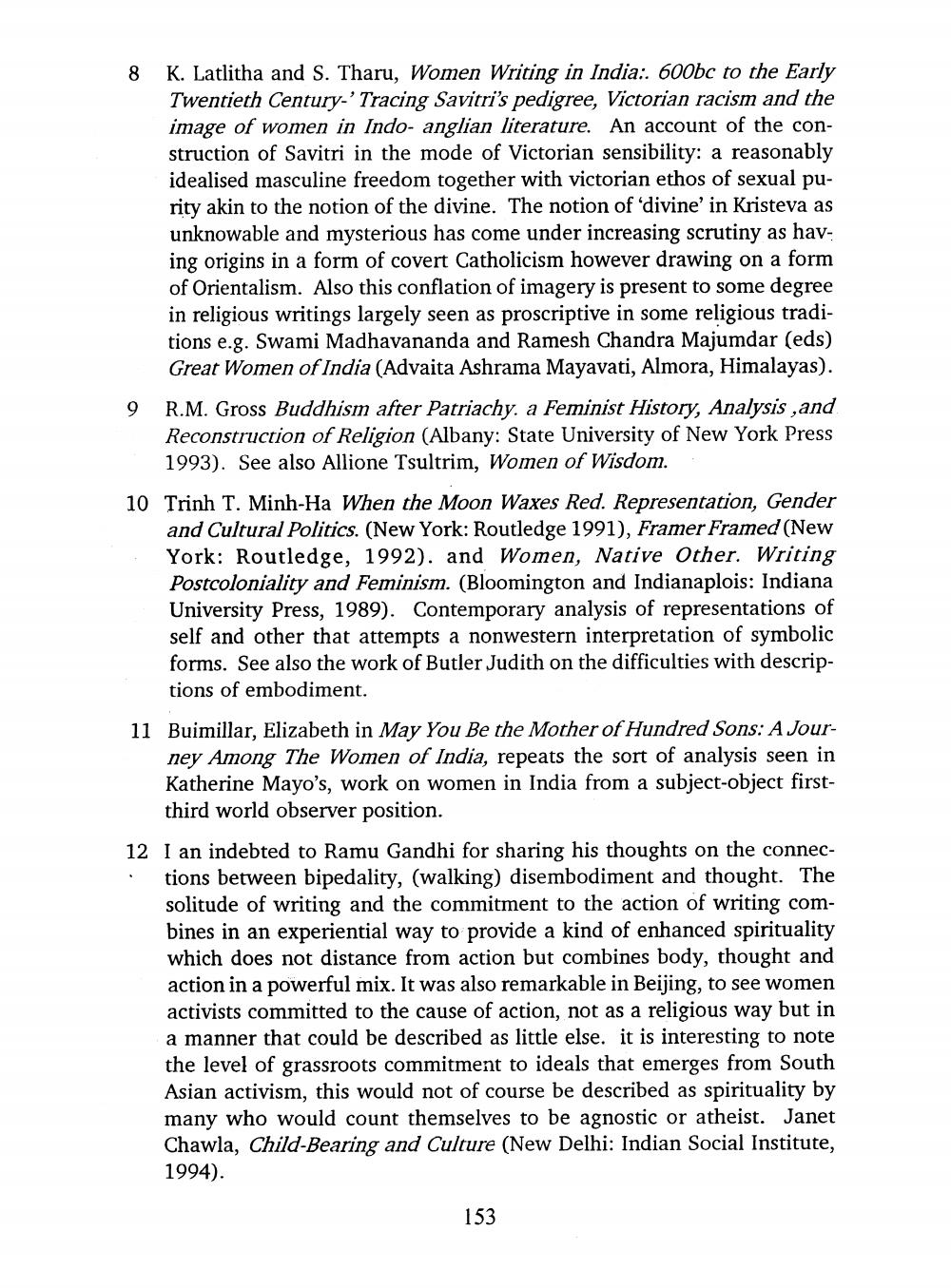________________
8
K. Latlitha and S. Tharu, Women Writing in India: 600bc to the Early Twentieth Century-' Tracing Savitri's pedigree, Victorian racism and the image of women in Indo- anglian literature. An account of the construction of Savitri in the mode of Victorian sensibility: a reasonably idealised masculine freedom together with victorian ethos of sexual purity akin to the notion of the divine. The notion of 'divine' in Kristeva as unknowable and mysterious has come under increasing scrutiny as having origins in a form of covert Catholicism however drawing on a form of Orientalism. Also this conflation of imagery is present to some degree in religious writings largely seen as proscriptive in some religious traditions e.g. Swami Madhavananda and Ramesh Chandra Majumdar (eds) Great Women of India (Advaita Ashrama Mayavati, Almora, Himalayas).
9
R.M. Gross Buddhism after Patriachy. a Feminist History, Analysis,and Reconstruction of Religion (Albany: State University of New York Press 1993). See also Allione Tsultrim, Women of Wisdom.
10 Trinh T. Minh-Ha When the Moon Waxes Red. Representation, Gender and Cultural Politics. (New York: Routledge 1991), Framer Framed (New York: Routledge, 1992). and Women, Native Other. Writing Postcoloniality and Feminism. (Bloomington and Indianaplois: Indiana University Press, 1989). Contemporary analysis of representations of self and other that attempts a nonwestern interpretation of symbolic forms. See also the work of Butler Judith on the difficulties with descriptions of embodiment.
11 Buimillar, Elizabeth in May You Be the Mother of Hundred Sons: A Journey Among The Women of India, repeats the sort of analysis seen in Katherine Mayo's, work on women in India from a subject-object firstthird world observer position.
12 I an indebted to Ramu Gandhi for sharing his thoughts on the connections between bipedality, (walking) disembodiment and thought. The solitude of writing and the commitment to the action of writing combines in an experiential way to provide a kind of enhanced spirituality which does not distance from action but combines body, thought and action in a powerful mix. It was also remarkable in Beijing, to see women activists committed to the cause of action, not as a religious way but in a manner that could be described as little else. it is interesting to note the level of grassroots commitment to ideals that emerges from South Asian activism, this would not of course be described as spirituality by many who would count themselves to be agnostic or atheist. Janet Chawla, Child-Bearing and Culture (New Delhi: Indian Social Institute, 1994).
153




